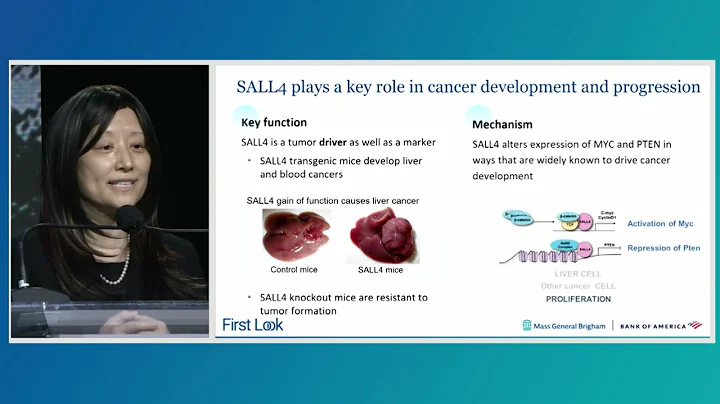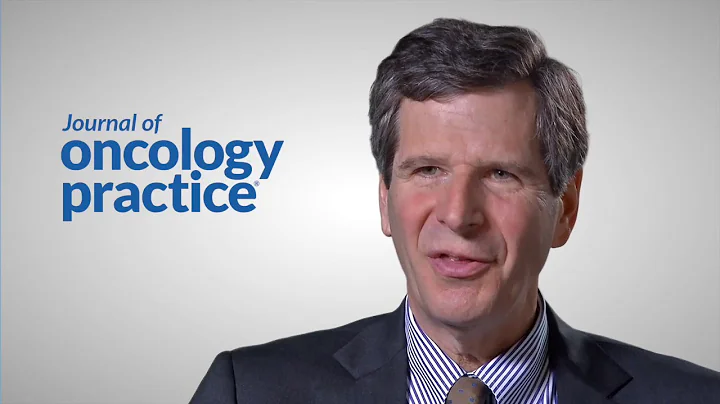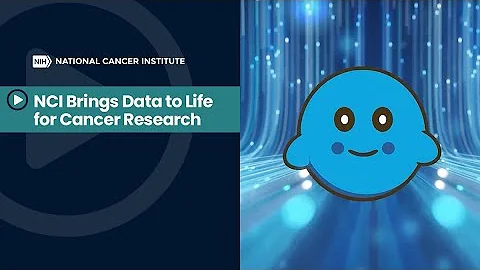
In order to allow my country's clinical oncology workers to share world-class scientific research results faster and more conveniently, on July 1-2, 2022, the Chinese Society of Clinical Oncology (CSCO) jointly Beijing Xisike Clinical Oncology Research Foundation co-sponsored the "2022 China Annual Progress Symposium on Clinical Oncology (BOC) and Best of ASCO®2022 China" in Jinan, Shandong. The conference included more than ten special sessions, commenting on the essence of various cancer types in the 2022 ASCO Annual Meeting. Among them, the Head and Neck Cancer special session was co-hosted by Professor Ma Jun from Sun Yat-sen University Cancer Prevention and Treatment Center and TongProfessor Guo Ye from Jilin University Affiliated Oriental Hospital. Many experts and scholars expressed their opinions on this ASCO annual meeting. The important progress in the field of head and neck tumors has been interpreted. Yimaitong has compiled it as follows and shared it with readers.

Professor Ma Jun presided over

Professor Guo Ye presided over
Professor Liu Lei reported
First of all, West China Hospital of Sichuan University Professor Liu Lei interpreted two studies for us, namely the ConCERT trial (Abstr 6004) and the ROMAM trial (Abstr 6005). The

ConCERT trial was an open-label, non-inferiority, phase III controlled trial of cisplatin 40 mg/m² weekly plus radiotherapy (experimental arm) versus cisplatin 100 mg/m² weekly plus radiotherapy (control group) in the localized setting. Application in advanced head and neck tumors was evaluated. The study included patients with previously untreated locally advanced non-nasopharyngeal cancer head and neck tumors, and the primary endpoint was the 2-year local-regional control rate (LRC).
A total of 133 patients in each two groups were included in the final analysis as the intention-to-treat population (ITT), and the patient baselines were basically balanced. The 2-year LRC of the experimental group and the control group were 53.44% and 47% respectively (HR 0.84, 95% CI 0.58-1.20), with no significant difference. The median overall survival (OS) of the two groups was 30 months and 25.5 months respectively (P=0.751), and the median progression-free survival (PFS) was 21.3 months and 20.8 months (P=0.377) respectively. See significant differences. Safety analysis showed that the incidence of adverse events such as mucositis, nephrotoxicity, and vomiting in the experimental group was significantly lower than that in the control group. The
ConCERT trial suggests that for patients with locally advanced head and neck tumors, weekly cisplatin combined with radiotherapy is non-inferior to three weeks of cisplatin combined with radiotherapy, and has better tolerability and safety, and may be a treatment option for patients with locally advanced head and neck tumors. A radical treatment method for some cancer patients.

The ROMAM trial is a phase III trial evaluating avasopasem manganese (AVA) in the treatment of severe stomatitis (SOM) due to chemoradiation in patients with locally advanced non-metastatic head and neck cancer (LAHNC). Efficacy. The study included patients with locally advanced squamous cell carcinoma of the oral cavity/hypopharynx and receiving intensity-modulated radiotherapy (IMRT) + cisplatin combination. Patients were randomly assigned (3:2) to receive AVA 90 mg or placebo. The primary endpoint of the study was the occurrence of SOM during IMRT. A total of 241 patients in the
AVA group and 166 patients in the placebo group were included in the analysis, and the patients were basically balanced at baseline. The results showed that the incidence rate of SOM in the AVA group was 54% during IMRT and 64% in the placebo group (P=0.045); at all stages of IMRT and after the end of IMRT, the incidence rate of SOM in the AVA group was significantly lower than that in the placebo group. . The evaluation of indicators such as the number of days SOM occurred and the incidence of grade 4 stomatitis showed that the AVA group performed better than the placebo group. Safety analysis showed that AVA was generally well tolerated and no new safety signals were found. The
ROMAM trial showed that AVA can reduce the incidence and duration of SOM, and its safety is similar to that of placebo. The drug can significantly improve the occurrence of SOM in LAHNC patients and avoid reducing treatment compliance due to adverse reactions.
Professor Zhang Li reported

Professor Zhang Li from the Sun Yat-sen University Cancer Center shared with us the updated results of the randomized, double-blind , phase III study RATIONALE-309 trial, which evaluated the efficacy of tislelizumab combined with chemotherapy in recurrence/metastasis Efficacy and safety in first-line treatment of recurrent nasopharyngeal carcinoma (R/M NPC).The
study included patients with R/M NPC who had not received treatment before. Patients were randomly assigned (1:1) to receive tislelizumab 200 mg + gemcitabine + cisplatin (group A) or placebo + gemcitabine + cisplatin (group A). Group B) treatment. The primary endpoint of the study is PFS assessed by the Independent Review Committee (IRC) in the ITT population, and secondary endpoints include OS, PFS2 and safety. The updated results of
for 131 patients in Group A and 132 patients in Group B showed that the median PFS in Group A was 9.6 months and that in Group B was 7.4 months. Patients in Group A had a significant PFS benefit (HR 0.50, 95 %CI 0.37-0.68). OS data are not yet mature, but Group A has shown a trend of benefit (median OS: NR vs. 23.0 months, HR 0.60, 95% CI 0.35-1.01). Analysis of PFS2 showed that group A has not yet reached the median PFS2, while group B has a median PFS2 of 13.9 months. Group A has a significant benefit (HR 0.38, 95% CI 0.25-0.58). Safety analysis showed that the safety profile of tislelizumab combined with chemotherapy was controllable, consistent with previous reports.
's exploratory analysis of biomarkers showed that tislelizumab combined with chemotherapy showed a PFS benefit regardless of PD-L1 expression levels; in addition, PFS in patients with "hot tumors" and patients with dendritic cell activation features The benefits are more significant.
The updated data of RATIONALE-309 show that tislelizumab combined with chemotherapy can significantly improve patients' PFS and PFS2. Although the OS data is not yet mature, it has shown a benefit trend, and the safety of this regimen is controllable. No findings have been found. New security signals. This suggests that tislelizumab combined with chemotherapy may become the standard first-line treatment for patients with R/M NPC.
Professor Tang Linglong reported

Professor Tang Linglong from Sun Yat-sen University Cancer Center explained to us a randomized non-inferiority phase III study (Abstr 6000), which evaluated the application of IMRT alone and concurrent chemoradiotherapy in patients with low-risk nasopharyngeal carcinoma. efficacy and safety. The
study included nasopharyngeal carcinoma patients with stage II and T3NOMO. The patients were randomly assigned (1:1) to receive IMRT alone or IMRT combined with cisplatin concurrent chemotherapy. The primary endpoint of the study is 3-year disease-free survival (FFS), and secondary endpoints include 3-year OS, 3-year distant metastasis-free survival (DMFS), 3-year locoregional recurrence-free survival (LRRFS), and safety.
's analysis of 172 patients in the IMRT alone group and 169 patients in the concurrent chemoradiotherapy group showed that the baseline of the patients was basically balanced. Analysis of FFS showed that the 3-year FFS of the IMRT alone group was 90.6%, while that of the concurrent chemoradiotherapy group was 91.9%. There was no significant difference between the two groups (HR 1.35, 95%CI 0.69-2.4, P=0.86). The analysis of OS, DMFS and LRRFS also showed that there was no significant difference between the IMRT alone group and the concurrent chemoradiotherapy group. Safety analysis showed that the incidence of adverse events in the IMRT alone group was lower than that in the concurrent chemoradiotherapy group; quality of life analysis showed that the IMRT alone group had a higher quality of life.
Research shows that for patients with low-risk nasopharyngeal carcinoma, the efficacy of IMRT alone is non-inferior to concurrent chemoradiotherapy, with lower toxicity and higher patient quality of life. This study suggests that IMRT alone is an effective and safe treatment for patients with low-risk nasopharyngeal carcinoma.
Professor Sun Yan reported
Peking University Cancer Hospital Professor Sun Yan interpreted two studies for us, ASCO abstract numbers are 6001 and 6002 respectively.

is first a prospective randomized phase III trial (Abstr 6001) evaluating nimotuzumab combined with radiotherapy and chemotherapy in patients with locally advanced nasopharyngeal carcinoma (Abstr 6001). This trial included patients with stage III/IVA nasopharyngeal carcinoma. Patients were randomly assigned (3:1) to receive nimotuzumab 200 mg + concurrent chemoradiotherapy (group A) or placebo + concurrent chemoradiotherapy (group B). The primary endpoint of the study was 5-year OS, and secondary endpoints included Objective response rate (ORR) and safety, etc. A total of 361 patients in group A and 121 patients in group B were included in the analysis of
results. The patients' baselines were basically balanced. Analysis of the full analysis set showed that the 5-year OS of group A was 76.9%, and the 5-year OS of group B was 64.3%. Patients in group A had a significant OS benefit (HR 0.64, 95% CI 0.55-0.72, P=0.042) ; Analysis of the per-protocol analysis set showed that the 5-year OS of group A was also higher than that of group B, but there was no statistical difference (74.7% vs. 64.3%, P=0.183).In the full analysis set, the CR rate of group A was 57.3%, and that of group B was 45.5%. The difference was statistically significant (P=0.023). In the set of evaluable patients, the CR rate of group A was 62.4%, and that of group B was 49.1. %, the difference is also statistically significant (P=0.014). Safety analysis showed no significant difference in safety between the two groups.
research shows that for patients with locally advanced nasopharyngeal carcinoma, nimotuzumab combined with chemotherapy and radiotherapy has better efficacy, significant benefits in OS and ORR, and this regimen has good safety, and may become a new treatment for patients with advanced nasopharyngeal carcinoma. choose. The study of

Abstr 6002 is a phase II single-arm study designed to evaluate whether reducing the dose of radiation therapy in the induction chemotherapy combined with concurrent chemoradiotherapy strategy can be achieved without affecting the prognosis in patients with low-risk stage III chemotherapy-sensitive nasopharyngeal carcinoma. Reduce toxicity. The study included patients with stage III low-risk nasopharyngeal carcinoma. After 2 cycles of induction chemotherapy, chemotherapy-sensitive patients were screened, and these patients were treated with 60 Gy of concurrent chemoradiotherapy. Patients who were not sensitive to chemotherapy were treated with standard chemotherapy. 70 Gy concurrent chemoradiotherapy. The primary endpoint of the study is 2-year PFS of the 60 Gy cohort, and secondary endpoints include 2-year OS. A total of 215 patients were included in the
study analysis. The results showed that the patient's 2-year PFS could reach 95%, which was higher than the study's preset value of 91.7%; the patient's 2-year OS was 100%, the 2-year DMFS was 97%, and the 2-year LRRFS is 97%. Safety analysis showed that the acute toxicity and late toxicity of the 60 Gy cohort were better than those of the 70 Gy standard treatment group, and the quality of life of the 60 Gy cohort was better. The
study shows that for patients with low-risk stage III and chemotherapy-sensitive nasopharyngeal carcinoma, 60 Gy radiotherapy brings good survival benefits and reduced treatment toxicity. Further phase III studies are needed to verify this conclusion.
Professor Yang Kunyu commented

Professor Yang Kunyu from the Union Hospital Affiliated to Tongji Medical College of Huazhong University of Science and Technology made expert comments on the above 6 studies. Professor Yang Kunyu said that at this ASCO conference, there were 6 blockbuster studies on head and neck tumors. Four of them are from Chinese scholars. Regarding these studies, Professor Yang believes that the following points deserve attention.
The first is the "de-escalation" treatment strategy. At present, the therapeutic efficacy of nasopharyngeal cancer has reached the "ceiling", but the toxicity caused by high-dose quality is seriously affecting the quality of life of patients. Therefore, in this study, Chinese scholars' Abstr 6000 study and Abstr 6002 study both explored The Abstr 6000 study is a "de-escalation of chemotherapy" and the Abstr 6002 study is a "de-escalation of radiotherapy". Although there are differences in the research design and ideas of the two studies, both aimed to accurately screen out low-risk nasopharyngeal cancer people and accurately provide "de-escalation treatment", and both studies proved that this strategy is feasible and "de-escalation treatment" "Treatment" reduces toxicity without reducing efficacy, which provides ideas for the design and conduct of follow-up research.
Secondly, it is “addition”, that is, the strategy of nimotuzumab + concurrent chemoradiotherapy in the Abstr 6001 study. Previous studies have shown that cisplatin combined with cetuximab and concurrent radiotherapy failed to improve patient survival, while the Abstr 6001 study showed that there was a significant benefit in patients' 5-year OS, and the patient's CR rate was significantly improved. This is a treatment for locally advanced nasopharyngeal carcinoma. Important results of targeted therapy combined with concurrent chemoradiotherapy.
followed by immunotherapy , the RATIONALE-309 study evaluated the efficacy of tislelizumab combined with chemotherapy. The study obtained gratifying results, and the patient's PFS benefit was significant. Moreover, the study's biomarker analysis suggested that the expression level of PD-L1 did not affect the therapeutic benefit of tislelizumab, and the PFS benefit of patients with "hot tumors" and patients with dendritic cell activation characteristics More significantly, this lays a good foundation for the application of immunotherapy in nasopharyngeal cancer, and we also look forward to further exploration in this field.
Finally, it is the "attenuation" strategy for radiotherapy for head and neck squamous cell carcinoma. The ConCERT trial evaluated the efficacy and safety of a three-week cisplatin strategy and a weekly cisplatin strategy. The study confirmed that the efficacy of the two strategies is similar, and that cisplatin Weekly strategies are less toxic. However, the radiotherapy methods in this study were relatively backward, with only about 25% of patients using IMRT, and the treatment interruption rate was extremely high, so there were some differences with clinical practice in my country.The ROMAM trial aimed to reduce the impact of SOM on patient compliance, and the results of the study were encouraging. AVA significantly improved the occurrence of SOM in patients with LAHNC.

Expert discussion

Professor Ma Jun presided over the expert discussion
Subsequently, under the chairmanship of Professor Ma Jun, many experts and professors participated in the discussion session and shared their thoughts on the future treatment direction of head and neck tumors. The head and neck special session was perfect. Finish.

Editor: Youshi
Typesetting: Youshi
Execution: Uni
END
Famous teacher classroom, scan the code to enter

For more courses, please see the "Yimaitong Knowledge Bank" public account





















